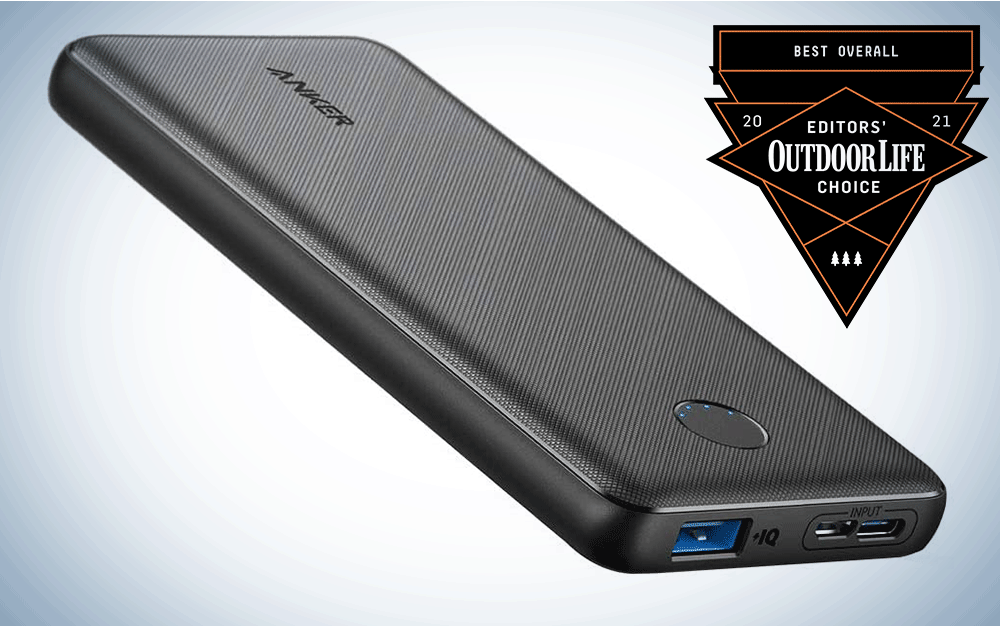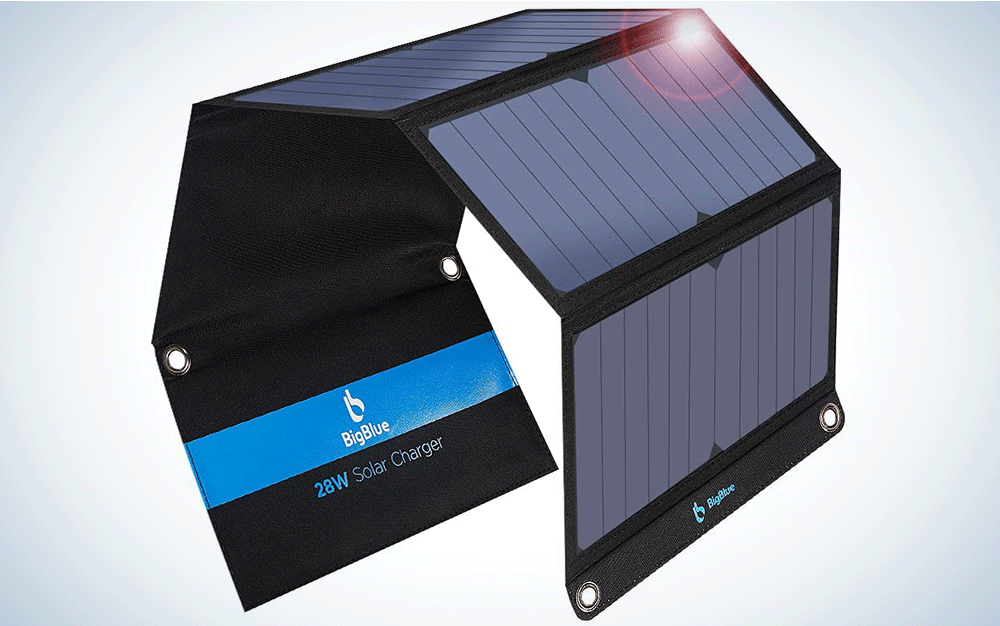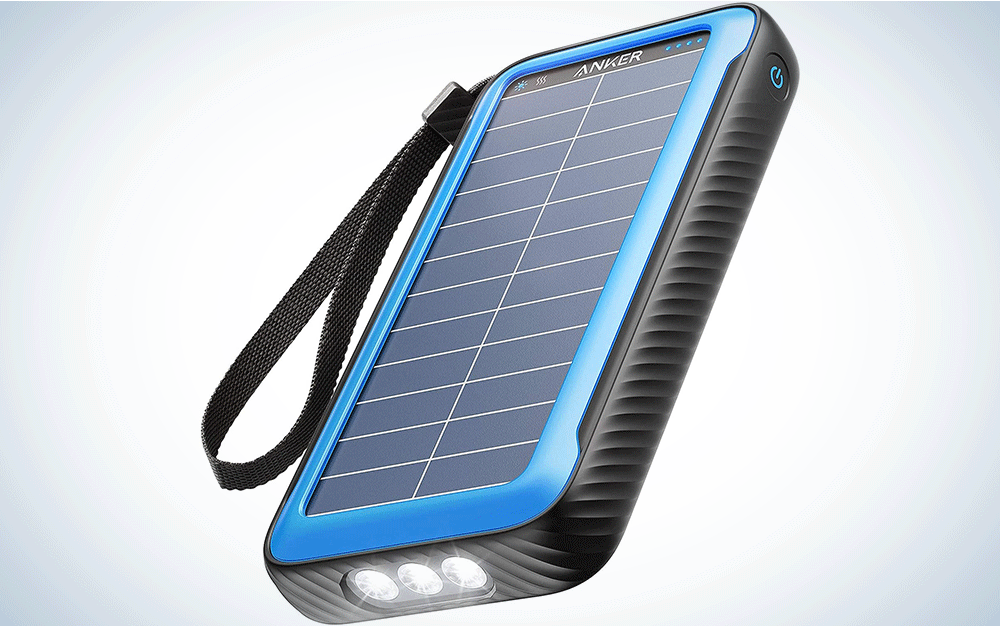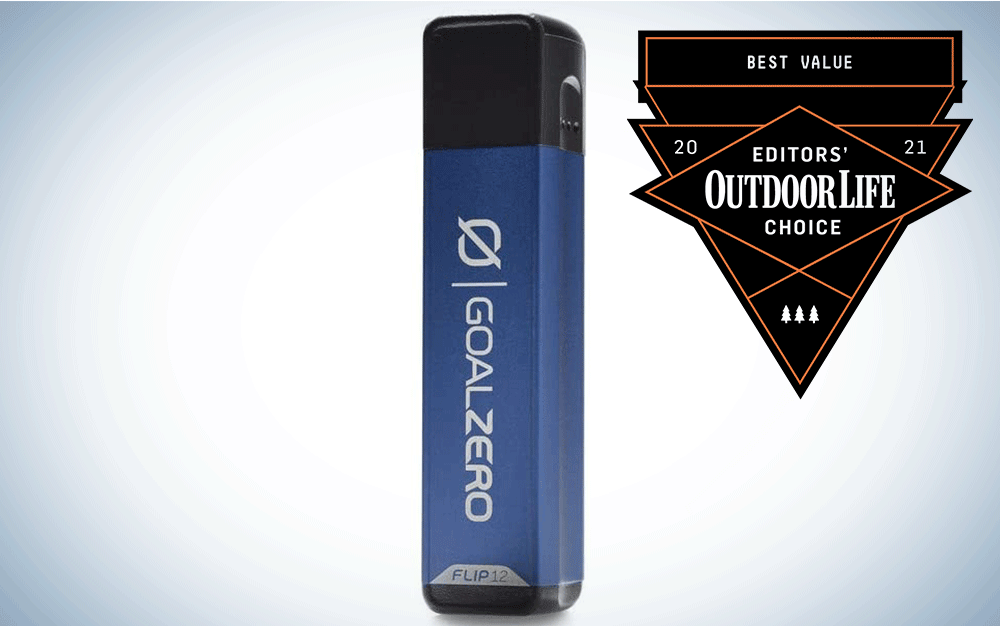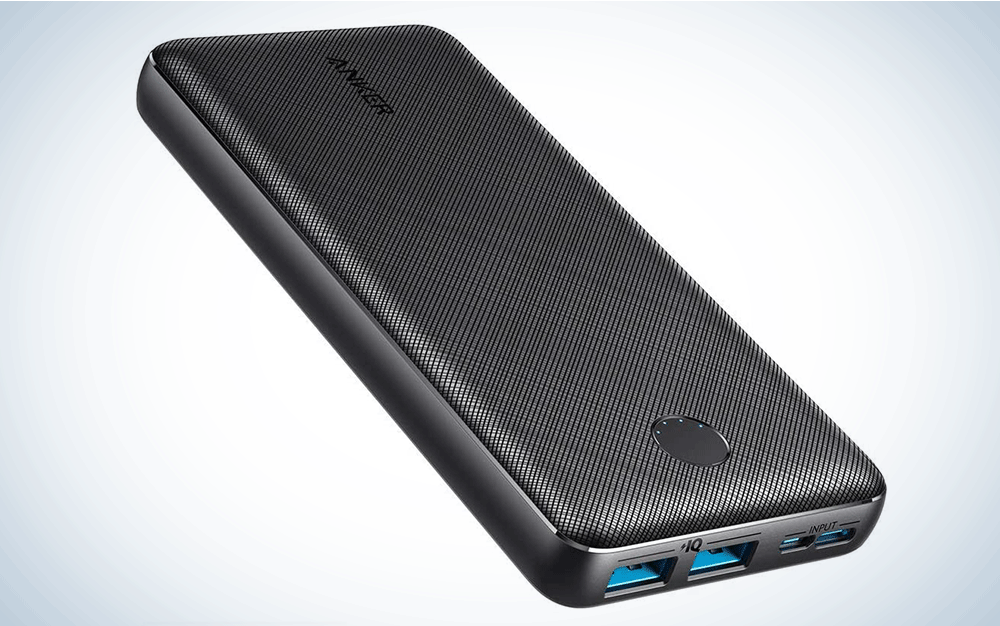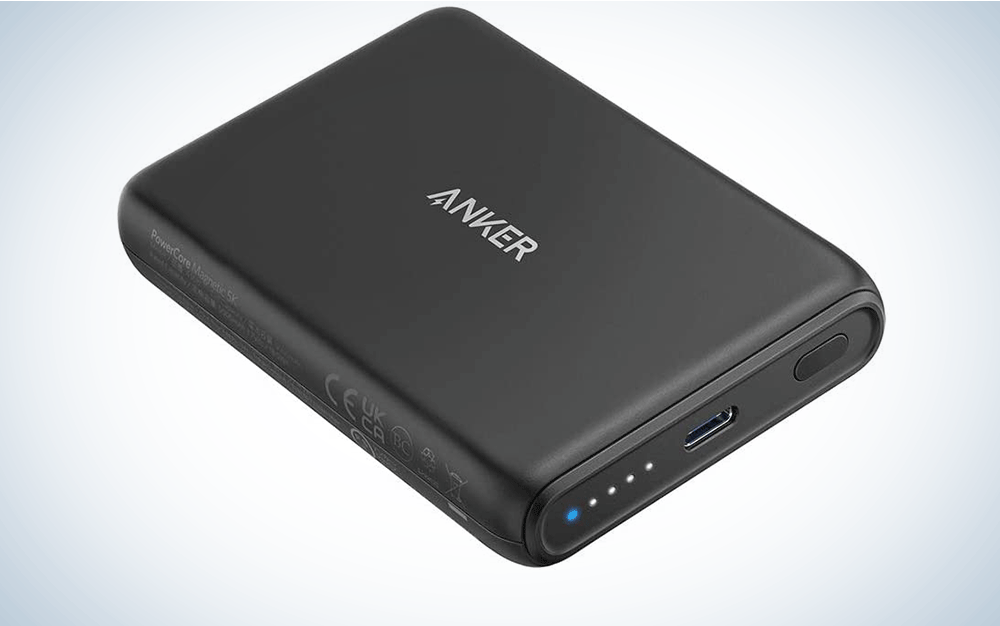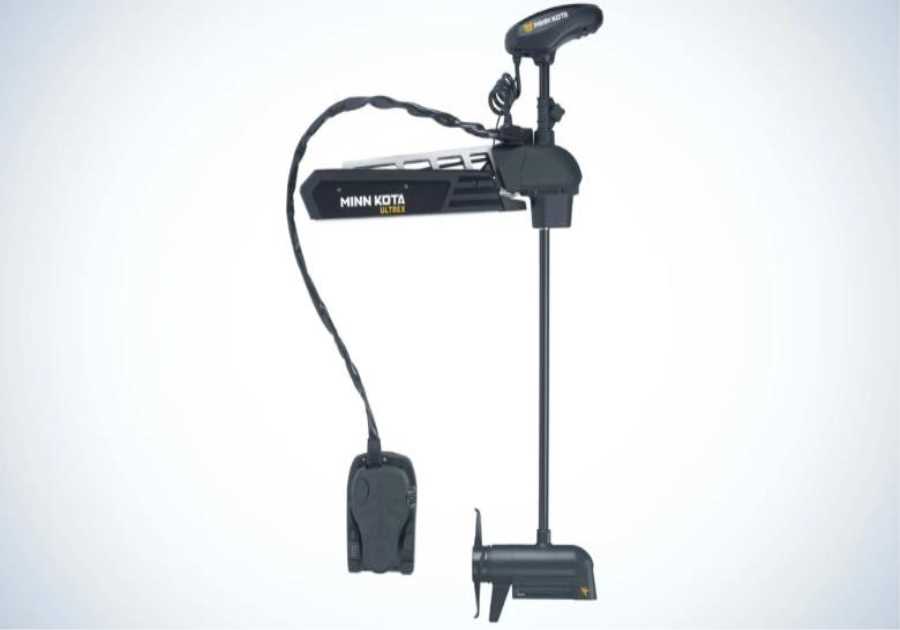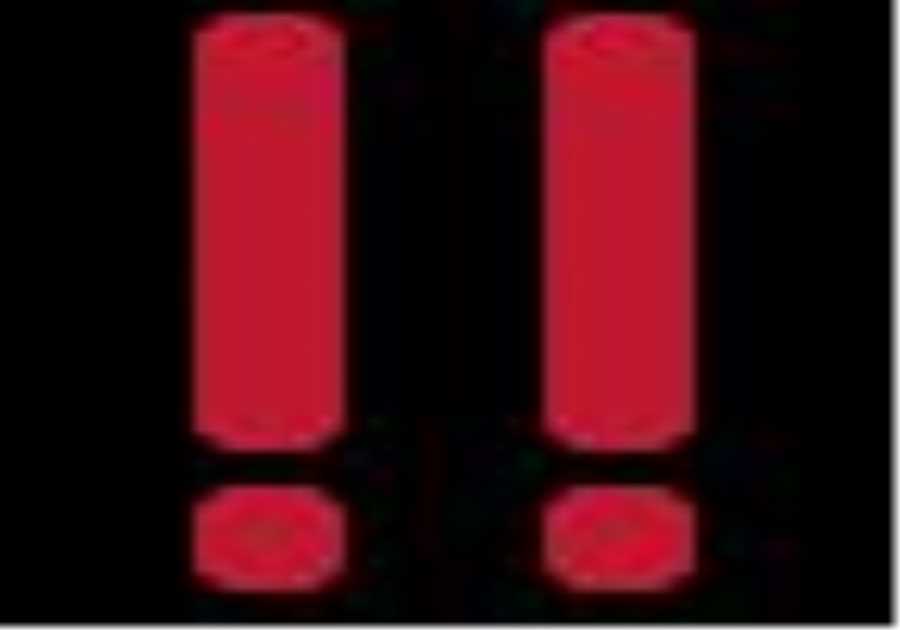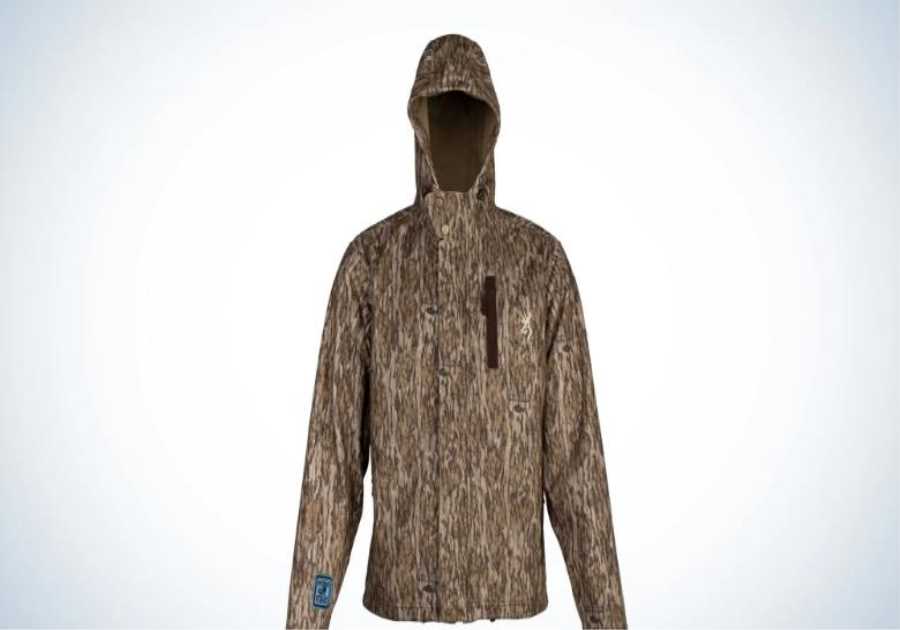||
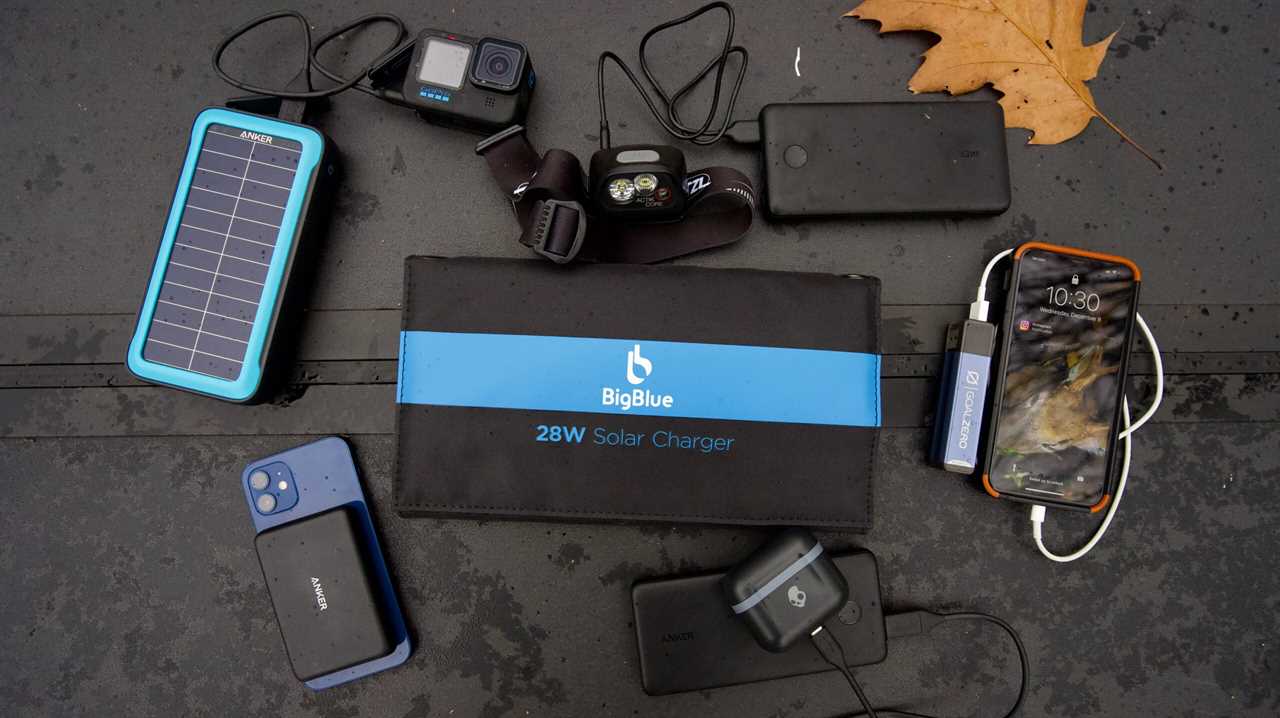
We may earn revenue from the products available on this page and participate in affiliate programs. Learn More ›
| Best Overall |
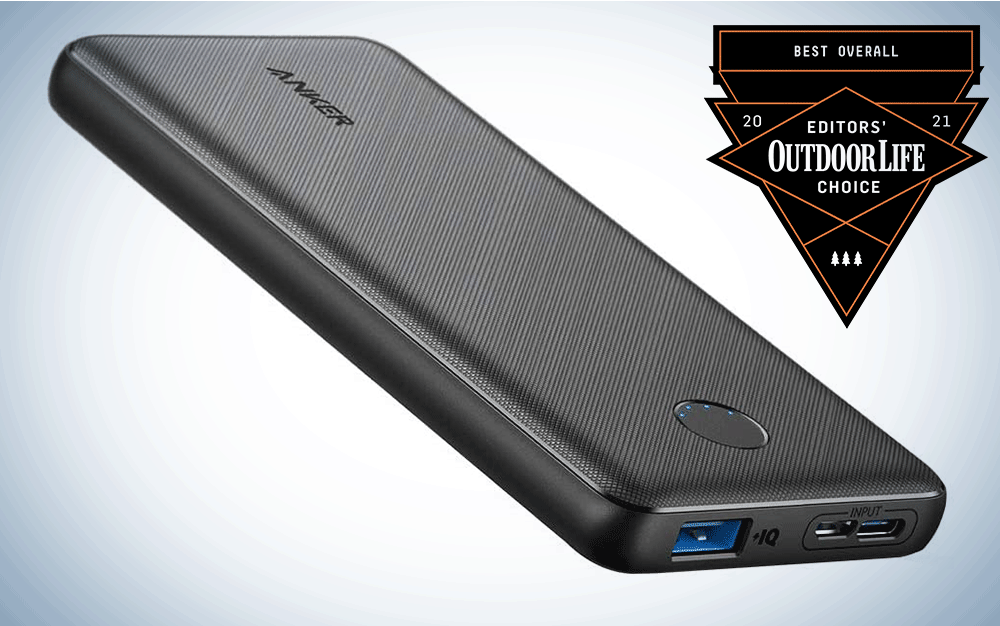
|
Anker PowerCore Slim 10,000 mAh | SEE IT |
LEARN MORE
|
Summary
Small, light, and can charge your phone twice. |
| Best Solar |
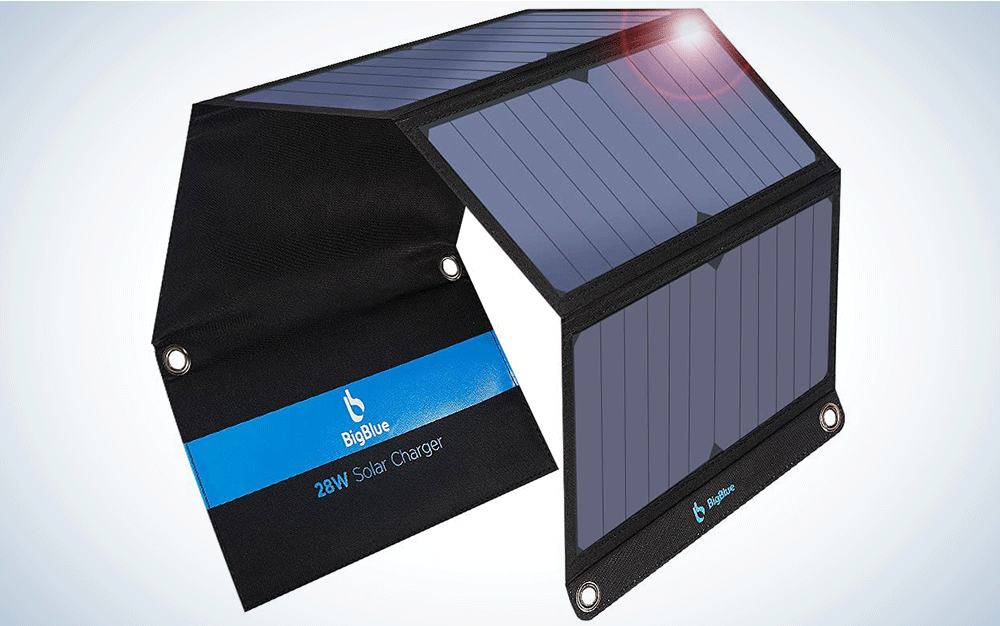
|
BigBlue 28-Watt Solar Charger | SEE IT |
LEARN MORE
|
Summary
An affordable, effective solar charger. |
| Best Small |
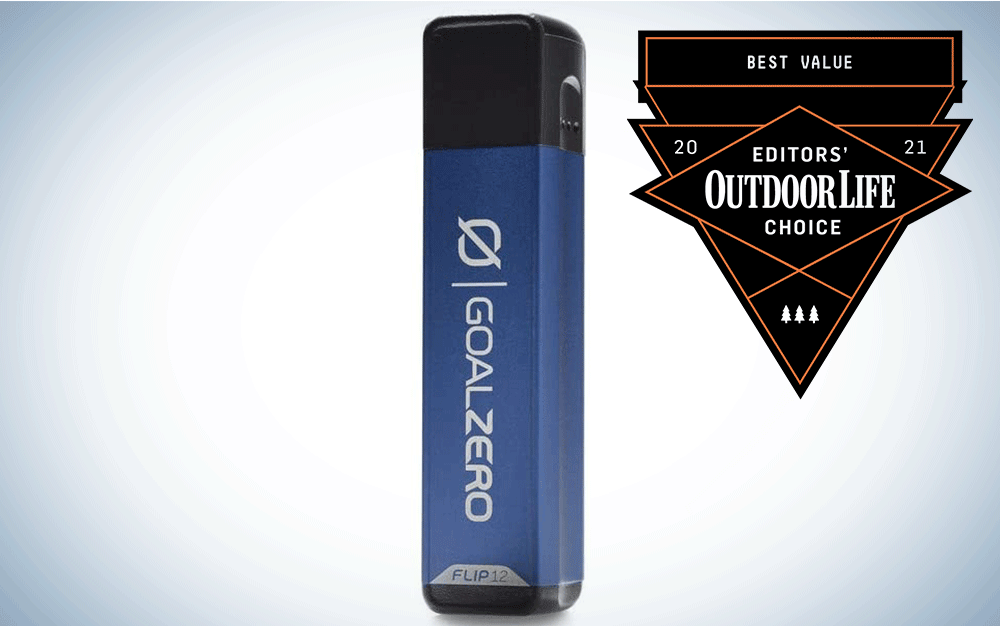
|
Goal Zero Flip 12 | SEE IT |
LEARN MORE
|
Summary
Super compact with a full charge. |
If I have the choice between a device that uses conventional batteries or one that uses rechargeable batteries, I’ll always go with rechargeable. But that means I need to maintain that device, which is why a portable power bank comes with me on nearly every trip. Over the past month, I’ve tested a dozen of the top rated power banks, and from that initial pool, I’ve narrowed it down to the six best power banks.
It doesn’t matter if I’m spending time outdoors or traveling, I’ll need to recharge something, and will inevitably use a power bank. My picks for the best power banks have been used while in the outdoors as well as for everyday use and holiday travel. They’ve juiced up headlamps, GoPros, my iPhone, and even other power banks. After all that field testing, here are my findings and recommendations for the best power banks.
- Best Overall: Anker PowerCore Slim 10,000 mAh
- Best Solar: BigBlue 28-Watt Solar Charger
- Best for Fishing: Anker Solar
- Best Mini: Goal Zero Flip 12
- Best for Backpacking: Anker PowerCore Essential 20,000 mAh
- Best for iPhones: Anker Powercore Magnetic 5K
How I Tested the Power Banks
I tested the power banks in three ways: First, I timed how long it takes them to fully charge and how many times they fully charged my iPhone 11 Max. Then over a one-month period I carried these portable chargers during outdoor activities in several states, on long road trips, and a fishing trip in North Carolina. During that month I subjected them to heat, cold, and water to test their durability. Finally, I weighed and measured each power bank to provide you with accurate specs.
Here are the attributes I used to evaluate the power banks:
- As advertised (Do the chargers do what the manufacturer advertises?)
- Number of charges and charge time (How many times does it charge a phone? How long does it take to charge?)
- Use in the field (Is it practical to use while hunting, fishing, camping, hiking or backpacking?)
- Durability (Can it hold up to abuse?)
- Weight (Ounces are pounds, and pounds are pain.)
Best Power Bank Overall: Anker PowerCore Slim 10,000 mAh
Key Features
- 10,000 mAh
- 3-hour charge time
- Charges an iPhone twice
- One USB port
- Micro USB and USB-C input
- Weight: 8.4 ounces
- Length: 6 inches
- Width: 2.75 inches
- Depth: .5 inch
Pros
- Fast charging
- Lightweight
- Slim profile
Cons
- Only charges one device at a time
- Not the best option for extended trips
Product Overview
owerCore 10,000 mAh. It’s a happy medium between a small charger like the Goal Zero Flip 12 and the PowerCore 20,000 mAh. If you are going out for the day or an overnight trip, it provides plenty of juice with two phone charges. It’s also light and small enough to not take up space in a pack or pocket.
The Anker PowerCore went through three key tests: a timed charge, testing how many times it would charge my iPhone 11 Pro Max, and using the power bank in the field. One of my favorite features of this power bank is how fast it charges. In a few hours, you can bring it from dead to fully juiced and ready to hit the field. It’s fast charging ability also makes it an excellent candidate to pair with a solar panel like the BigBlue 24 watt.
In my testing, the Anker PowerCore charged my phone twice. That’s two times with the phone on and in use. So, if you keep your phone off while it’s charging, you can expect the power bank to last longer—Anker rates it at two-and-a-quarter iPhone 12 charges. I most often use this charger when I’m going to be out all day and will need to charge my phone once, along with another device like a GoPro. It would also be ideal for a two-to -three day camping trip where you need to charge your phone twice.
The Anker PowerCore is slim and light enough that you can carry it in a pocket for everyday carry. It’s also perfect for carrying in a daypack or sling bag. Mine has been with me hunting, fishing, and traveling—it’s yet to let me down.
Read Next: Best Power Banks for Camping
Best Solar Power Charger: BigBlue 28-Watt Solar Charger
Key Features
- 25 Watt
- 3 USB ports
- Charges a phone in about 3 hours of full sun
- Charges a 10,000 mAh power bank in 6 hours
- Weight: 1 pound 9 ounces
- Length: 11.125 inches
- Width: 6 inches
- Depth: 1.375 inches
Pros
- Price
- Charging speed
Cons
- Size
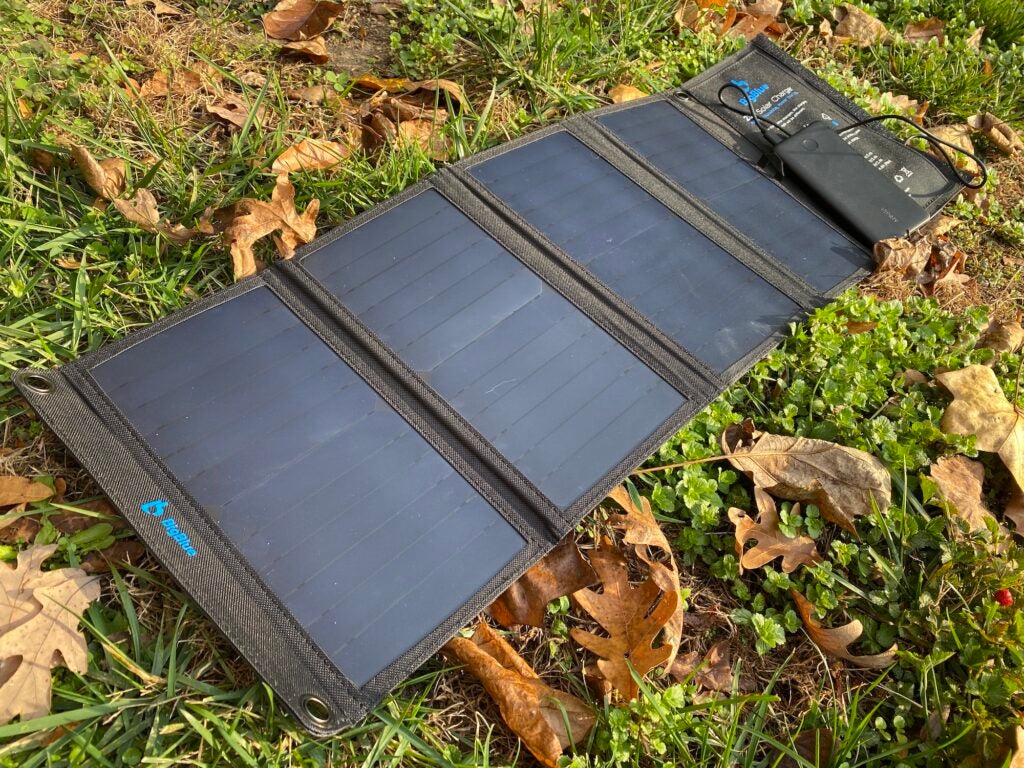
Product Overview
There are a lot of portable solar chargers on the market, and they range in price as much as they do in effectiveness. The BigBlue is the best solar power charger that actually works and it’s affordable. You have to manage your expectations when it comes to these small solar panels and while three hours to bring a phone to full charge seems like a lot, I think it’s pretty impressive.
Here’s the context of my testing. I tested this solar panel in the fall when the sun sits low in the sky. The first hour of the charge the panel received partial sun. I managed the position of the panel throughout the day to keep it aligned with the sun.
The first test was to see how long it took to charge a Goal Zero Flip 12, which is good for one full phone charge. That test took three hours, which is how long it takes to charge the Flip 12 when plugged into the wall. The next test was to see how long it takes to charge my pick for the best power bank, the PowerCore 10,000 mAh. After six hours in the sun the power bank was at full power.
When you’re in the field, you probably don’t have time to sit around for six hours waiting for a power bank to charge. But, that’s not the best way to use this charger. In my opinion, using the solar panel to maintain battery life rather than fully charge a device is the best use. For example, if you are glassing in the morning, you can roll out your solar charger and plug in a device. Let’s say you stay put for just an hour, that’s enough time to charge a phone 30 percent. By charging your devices a little at a time throughout your time in the field you can make your powerbank or batteries last much longer.
Read Next: Best Solar Generators
Best Power Bank for Fishing: Anker Solar
Key Features
- Water resistant
- Solar charging
- 20,000 mAh
- Two USB ports
- One USB-C port
- Needs to be charged overnight
- Charges a phone four times
- Weight: 1 pound
- Length: 6.875 inches
- Width: 3.625 inches
- Depth: 1.125 inches
Pros
- Lots of power
- Charges devices quickly
- Durable
Cons
- Takes a long time to fully charge
- Heavy
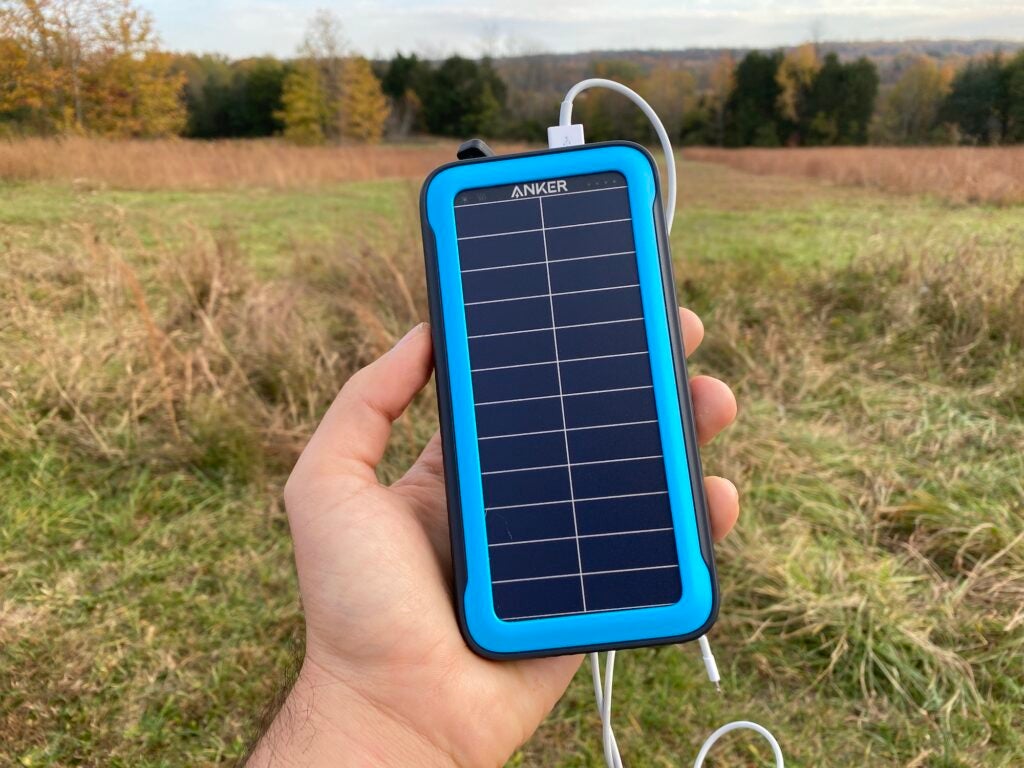
Product Description
I used the Anker Solar on a few upland bird hunting trips and a trip chasing false albacore in North Carolina making this the best power bank for fishing. While chasing albies, we had one bad weather day with a lot of chop. If I wasn’t wearing a rain suit, I would have been drenched. The Anker Solar was subjected to the same salt spray and it handled it just fine. It also had plenty of power to keep my phone, and GoPros fully charged during the ten hours of fishing. After I got off the boat, I grabbed a quick dinner before heading out on kayaks for fishing dock lights at night. That few hours wasn’t enough time to get the Anker Solar back to even half charge, which is the main downside.
If you plan to use this charger for backpacking or hunting, the weight and bulk are something to consider. The Anker PowerCore 20,000 mAh is considerably lighter and smaller, but it lacks the solar charging and weather protection the Anker Solar offers. Personally, I’d rather take the PowerCore for those applications, and think the Solar shines for fishing applications.
One of the questions you probably have is: does the solar panel on this powerbank work? If you plan to use the solar panel to fully charge your power bank, you’ll be waiting a while. I tested the solar charging capabilities by placing the power bank in full sun for six hours and did not see a measurable difference in charge. However, I think if you keep this charger in the sun all day, the battery will last longer than if you didn’t have the solar panel. So, consider it more of a battery extender, rather than a charger like the BigBlue.
Best Mini: Goal Zero Flip 12
Key Features
- 3,350 mAh
- One USB port
- One full phone charge
- Three-hour charge time
- Weight: 2.6 ounces
- Length: 3.75 inches
- Width: .625 inch
- Depth: .625 inch
Why it Made the Cut
This power bank weighs nothing, has a small footprint, and has enough juice to completely charge your phone.
Pros
- Charges quickly
- Lightweight
Cons
- Square shape makes it not ideal for pocket carry
Product Description
This Goal Zero small power bank won’t take up space in your pack and has enough juice to bring your phone from dead to fully charged. For overnight or day trips, it’s my top choice. I also like keeping this best small charger in my carry-on to keep my phone charged while traveling.
The biggest con is that its square shape makes it uncomfortable to carry in a front pocket. But, it’s at home in a cargo pocket, fanny pack, or day pack. My favorite features of the Flip 12 are it charges quickly and it doesn’t need a charging cable—the USB is built in. I also think it’s a great companion to a solar panel like the BigBlue.
Best for Backpacking: Anker PowerCore Essential 20,000 mAh
Key Features
- 20,000 mAh
- Up to five phone charges
- USB-C and Micro USB input
- Two USB output ports
- 11 hours to fully charge the power bank
- Weight: 12 ounces
- Length: 6.25 inches
- Width: 2.875 inches
- Depth: .5 inch
Pros
- Lots of power
- Can charge two devices at the same time
Cons
- No USB-C output
- Takes a long time to charge the power bank
Product Description
This is a power house for charging devices. Whether you’re on a short trip where you need to charge a bunch of devices or a long trip where you need to just keep a phone juiced, this is the best power bank. It weighs less than a pound and it’s easy to carry thanks to its slim profile and beveled corners.
The biggest con of the 20,000 mAh PowerCore is it takes a long time to fully charge. But, the negatives end there. The two USB ports allow you to simultaneously charge two devices. I used it to charge my phone and headlamp each night during a weekend outing. During a November fishing trip, I left the 20,000 mAh PowerCore outside in freezing temperatures. The power bank didn’t lose a bit of charge, which has been my experience with all my Anker power banks in cold weather. Granted, my cold weather in Virginia is different from Fairbanks, Alaska’s cold weather.
Best for iPhones: Anker Powercore Magnetic 5K
Key Features
- Wireless charging
- USC-C output and input
- 5,000 mAh
- Charges in three hours
- Charges a phone once
- Magnetic charging works with iPhone 12, iPhone 12 mini, iPhone 12 Pro, and iPhone 12 Pro Max
- Weight: 4.6 ounces
- Length: 3.625 inches
- Width: 2.437 inches
- Depth: .625 inch
Pros
- Charges quickly
- Ideal for iPhones
- Small footprint and lightweight
Cons
- Weak magnet
- Not ideal for other phones
Product Description
The PowerCore Magnetic 5K is a great size for everyday carry. It’s super lightweight and charges a phone fast using a USB-C charger. But, don’t buy this charger unless you have an iPhone, preferably a 12 variant, and a compatible magnetic case. If you don’t have a compatible magnetic case, you’ll have to remove your case to use the magnetic feature and you’ll be disappointed in the strength of the magnet.
But, if you do invest in a magnetic case, it’s a great wireless charger for outdoors use. Other wireless chargers aren’t practical for outdoor use because they need to be laid flat to maintain contact with your phone. But, the magnetic power bank from Anker snaps to your phone and stays connected even in a cargo pocket or your best backpack. You get the benefit of not needing to bring a charging cable and a continuous charge while you use your phone. I find this charger is ideal for all day sits, or days when I’m running OnX continuously.
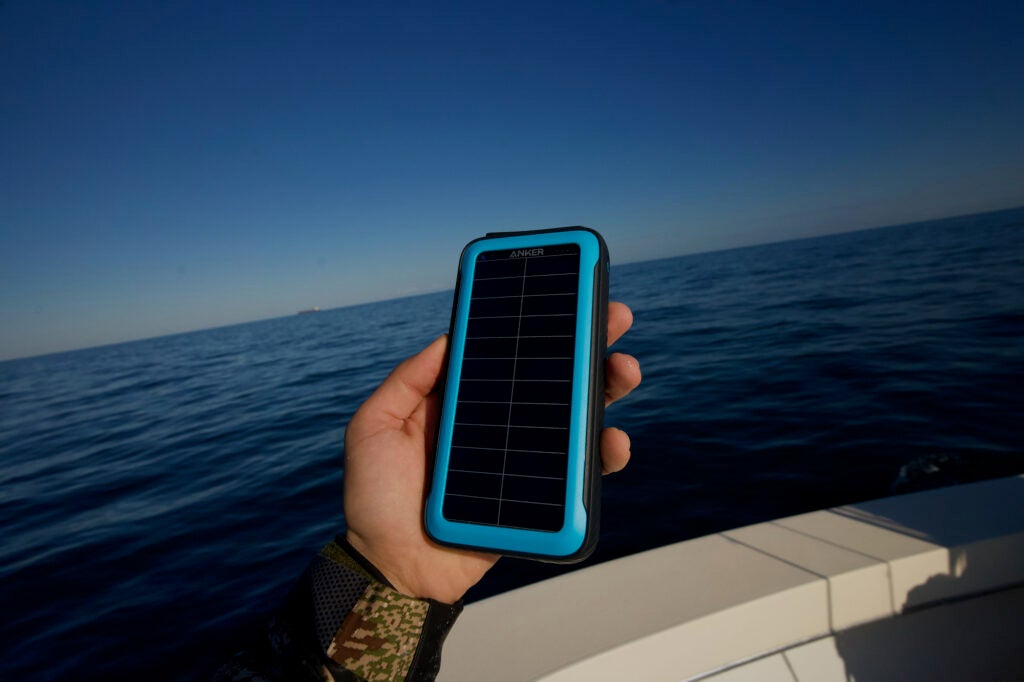
How to Choose a Power Bank
Power banks are a lot like other outdoor gear, there’s a trade off between features and weight. You can get more capability, but you’ll pay for it in size and weight. You’ll have to decide how much capability you need and how much weight you’re willing to carry.
Here are more things you’ll need to consider when buying a power bank or solar charger.
What is a mAh and how much do I need?
A spec you’ll often see is mAh, which stands for milliamps hour. The mAh spec is a measurement of power over time, the higher the mAh the more power the battery contains. To fully charge a phone you’ll need 3,000 to 5,000 mAh.
Watts
A watt is a measurement of rate of energy transfer. So, when shopping for portable solar chargers keep in mind that the more wattage the more power the panel can provide. I’d recommend at least a 24-watt solar charger.
Are solar chargers practical?
If you’re in an area where you can provide a solar charger full sun, and leave it all day to charge a power bank or device, they are practical. But, you can’t expect a solar charger that fits in your pocket to work well because you need surface area to effectively charge.
I found small solar panels to work best for maintaining battery life, rather than being used to fully charge a device. The main issue is that portable solar panels are small, and can only gather so much electricity. What they can do is lengthen your phone or power bank’s life. When you stop to glass or cook lunch, lay out your panel and let it charge the device for a few hours. Even if it’s a few percent increase in battery life, it’s free energy and a few percent here and there can add up over a week’s trip. If you get an extra 25 percent out of our powerbank I count that as a win.
Solar panels are also bulky and heavy. For example, the BigBlue weighs 1.5 pounds, and the 20,000 mAh PowerCore weighs less than a pound. You can pack two 20,000 mAh charges that would charge a phone ten times total and weigh the same as a BigBlue.
Waterproof Power Banks
Why didn’t I include any waterproof power banks? The rugged power banks that are fully waterproof and shock resistant come at the penalty of being heavy and bulky for the amount of power they provide. I’d much rather drop my power bank in a dry bag than carry the extra weight of a waterproof power bank. It’s also worth pointing out that while your waterproof power bank might survive a submersion, your phone won’t.
FAQs
Q: Which capacity of power bank is best?
A 10,000 mAh power bank is a good balance between charging ability (two phone charges) and size.
Q: Which brand power bank is best?
Anker makes the best power banks for everyday use. Goal Zero makes great power banks specific for the outdoors.
Q: How do I choose a good power bank?
First decide how much capacity you need and the physical size of the charger you’re willing to carry. Then you can look at the available options with your required specifications.
Q: What is the difference between a power bank and a portable charger?
They are synonyms and serve the same functions.
Final Thoughts on the Best Power Bank
The best power bank for you is going to be the one that best fits your specific needs. If you’re a whitetail hunter that just needs something for an all day sit, then the 10,000 mAh PowerCore is going to work well for you. If you spend all your time on a boat and need a power bank to keep your GoPros charged and not slow down if it gets wet, the Anker Solar is perfect. The key is deciding what features best fit how you’ll use your power bank and then choose the charger that best matches your requirements.
The post The Best Power Banks of 2023, Tested and Reviewed appeared first on Outdoor Life.
Articles may contain affiliate links which enable us to share in the revenue of any purchases made.
||-------------------------------------
By: Scott Einsmann
Title: The Best Power Banks of 2023, Tested and Reviewed
Sourced From: www.outdoorlife.com/gear/best-power-banks/
Published Date: Thu, 09 Dec 2021 14:17:17 +0000
.png)
